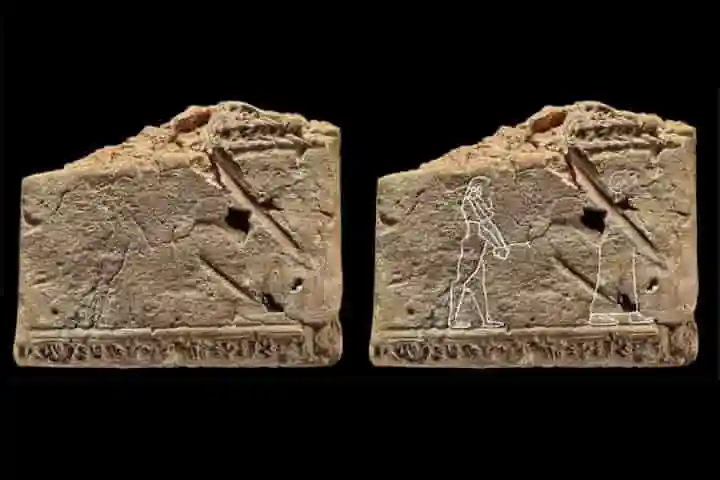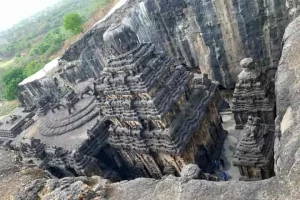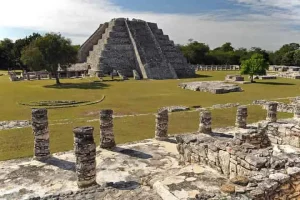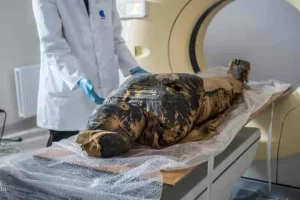Human beings have always been worried about ghosts and the supernatural. A proof of this is the ancient Babylonian tablet which is made around 1500 BCE, portraying a ghost, said an ancient Middle Eastern inscription scholar in his new book, according to an article in smithsonianmag.com.
The tablet in question is part of the British Museum’s collections that forms a part of the guide to exorcising ghosts. The curator of the museum’s Middle Eastern department, Irving Finkel, who has penned the forthcoming book “The First Ghosts: Most Ancient of Legacies” said that the tablet’s image is visible when it is viewed from above under a light. Though acquired in the 19th Century, the Museum has never exhibited it.
Finkel told the Observer: “You’d probably never give it a second thought because the area where the drawings are looks like it’s got no writing. But when you examine it and hold it under a lamp, those figures leap out at you across time in the most startling way.”
Small enough to fit in a person’s hand, nearly half of the tablet is missing. Yet it spells out instructions in detail about how to get rid of troublesome ghosts. In the directions, the exorcist is told to make figurines of a man and woman; make beer to be kept in two vessels, and at sunrise invoke the Mesopotamian god Shamash through ritual words as he is responsible for bringing ghosts to the underworld. The reason for making the two figures is to be able to transfer the ghost into one of them, Finkel said.
Providing a dramatic touch, the final line of the text tells the readers to “not look behind you!”
The drawing was most probably created by a master craftsperson who must have been very skilled to draw in clay, feels Finkel.
Talking to Artnet News Finkel said that after reading a history of ghosts that began in the 18th Century, he came to a decision to write the new book. “I suddenly thought, ‘Well, what about our stuff? What about Mesopotamia?’” he said.
In ancient civilisations, like that of Mesopotamia, it was expected that one will have encounters with ghosts. In the writings of Pliny, Lucian and Plautus there is reference to ghosts while some had even instructed as to how to purge certain kinds of ghosts.
Also read: Humans lived in America 23,000 Years ago, says new study
The tablet of Babylonia deals with getting rid of an older male ghost by leading him to the underworld by a young woman.
Finkel, describing this to the Observer said: “It’s obviously a male ghost and he’s miserable…You can’t help but imagine what happened before. ‘Oh God, Uncle Henry’s back.’ Maybe Uncle Henry’s lost three wives. Something that everybody knew was that the way to get rid of the old bugger was to marry him off. It’s not fanciful to read this into it. It’s a kind of explicit message. There’s very high-quality writing there and immaculate draughtsmanship.”
Finkel’s books also talks about objects like bronze amulets which were used to relieve ghosts and also rituals, one of which includes use of a human skull.
Finkel in a British Museum video of 2018 talked about Mesopotamia using funerary rituals to keep the dead at rest. People looked at ghosts with sympathy as they were thought to be those who have been deprived of eternal rest. “So there was a whole school of specialist magic, which was to appease ghosts and to send them back where they belong without any further trouble.”
Also read: From Mongolia to Hungary, how milk fuelled migration of the bronze age Yamnaya People
Ancient civilisations around the world talk about souls that survive following the death and that many of them return to the world as they have some unfinished work to complete or when their funeral rites were not done properly. Also stories around ghosts are found in ancient Mesoamerica, India, Egypt, Greece, Scotland, Ireland, China and Rome.
Ghosts in Mesopotamia on their return manifested as illness so doctors treating patients asked them to confess to their sins before starting the treatment and would placate the ghosts.




















